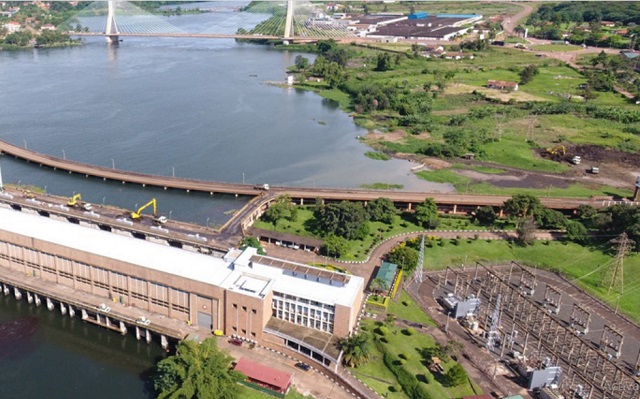
The government took over operation and maintenance of a 50MW Namanve Thermal plant last month
Kampala, Uganda | ISAAC KHISA | South African electricity firm, Eskom, will cease to operate and maintain Kiira and Nalubaale Hydropower Dams in eastern city of Jinja once its concession comes to an end next year, according to energy minister, Ruth Nankabirwa.
“For any concession that comes to an end, that will be the end because I am following the agreement unless there’s something really bad,” she said on March. 10 during the signing ceremony of internal performance contracts by employees of Uganda Electricity Generation Company Ltd (UEGCL) involved in the management of Isimba Hydropower Dam.
“By March 2023, we shall be signing off Eskom; taking over Kiira and Nalubaale dams,” she added.
Eskom has been operating and maintaining the two dams with a combined electricity generation of 380MW since 2002 in a 20-year concession that comes to a close in a 12-month’s period.
Last month, UEGCL took over the operation of a 50MW Namanve Thermal plant, ending a 13-year concession to build, operate and transfer the facility.
The state-owned UEGCL will be taking over operations and maintenance of Isimba Hydropower Dams effective April 1, with plans to onboard other hydropower dams including Karuma and other electricity generating companies that holds concessions with government.
Michael Elimu, the General Manager at Isimba Hydropower Dam said the government through UEGCL is taking over operations and maintenance of the dam at the time the facility’s defects are yet to be fixed.
He, however, said they are in agreement with the Owners Engineer on how to handle the defects in the meantime.
“However, it is worth to note that some of them really need full engineering input and to our assessment, they might not be fixed as soon as we would have liked,” he said.
He said operating a power plant is a complicated process as most of the inputs require clear planning to operate efficiently.
Elimu said their internal analysis showed that the annual budgeting cycle of UEGCL is not likely to avail them with the opportunity to meet the 97% availability and 99% reliability of the power plant.
“What this means is that in the fifth year; that is 2025, we will require more funds to overhaul the plant every five years as per the manufacturer’s recommendations…so, we shall have some overload in some years and less in others,” he said, adding that the power generated is determined by demand. He said the dam produced an average of 170MW for an entire month, out of the 183MW installed capacity.
Harrison Mutikanga, the CEO of UEGCL said the issue of the defects and other related issues will be addressed as soon.
He reiterated that the internally delegated performance contracts for employees at Isimba hydropower dam will facilitate efficiency while ensuring that there’s accountability, availability and reliability of the electricity to consumers.
“With this initiative, Isimba management will be able to spent Shs 300million without consulting us at head office,” he said.
Mutikanga, however, called upon the review of the Electricity Act to facilitate direct evacuation of electricity from the power plant to the industries as per President Yoweri Museveni’s suggestion.
He said the electricity sector also needs an Electricity Infrastructure Fund to facilitate investment in the infrastructure to boost electricity distribution.
Electricity Amendment bill taking shape
In response, Nankabirwa said Electricity Amendment Bill 2020 is already before parliament for approval and passage to pave way for direct evacuation of electricity from generation to industrial firms.
“We have submitted to the committee, done clause by clause by the committee and we are waiting for the committee report… third reading and the bill will pass.”
“In that bill we expect stringent measures for vandals, power thieves…we expect some reforms. I am also fighting to make sure that we have the Electricity Infrastructure Fund reinstated… I want the fund and the money.
“Karuma and Isimba hydropower dams are glaring examples where we used the money from the Electricity Infrastructure Fund. 15% on Karuma and 15% on Isimba and that is why we are expecting power from these two dams at a lower tariff,” she added.
Uganda generates more than 1,360MW of electricity and hopes to achieve nearly 2000MW this year with the switching on of Karuma Dam as the country races towards achieving 4,500MW of electricity by 2040 to promote industrial growth and export to the neighbouring states.
****
 The Independent Uganda: You get the Truth we Pay the Price
The Independent Uganda: You get the Truth we Pay the Price





